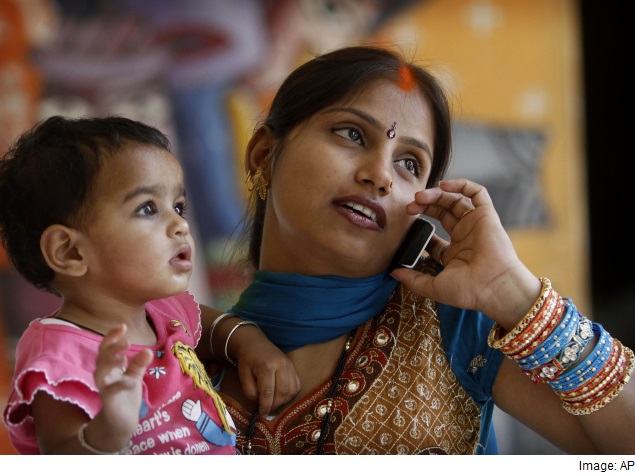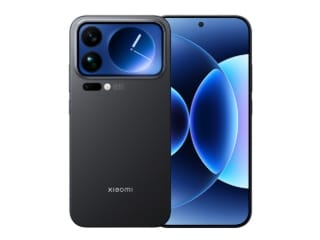- Home
- Mobiles
- Mobiles News
- China's Phone Makers Look to India for Growth
China's Phone Makers Look to India for Growth

For years, hundreds of millions of Chinese have bought new smartphones. In the process, they lifted the fortunes of local handset makers, from the well known like Huawei and Lenovo to the obscure like Coolpad and Gionee.
But the era of fast growth is coming to an end in China, where the research group IDC said on Monday that phone sales fell 4 percent in the first quarter from a year earlier, the first contraction in six years. IDC expects no growth in China's smartphone market in 2015.
The saturated Chinese market - more than 800 million people there use smartphones, according to IDC - means fewer new buyers, and a slowing economy means less spending. So Chinese companies are turning to India, trying to catch a $14.5 billion market on the way up.
"It is India first for us," said Varun Sharma, Coolpad's chief executive of Indian operations. He said Coolpad, a Shenzhen-based company, planned to use its patents and manufacturing infrastructure to sell devices "at $100 price points for the Indian market and not at $800 or $1,000 price points that global brands are doing."
India's smartphone sales are just a fraction of China's. But as one of the fastest-growing smartphone markets in the world, with hundreds of millions of potential new customers, India may indicate whether a new generation of Chinese hardware companies can grow beyond their country's borders.
It is intensely competitive, with more than 150 brands. Among the best-selling brands are several indigenous companies with an inside track on local phone habits. Another top seller is a multinational, Samsung, which has deep experience selling across different cultures.
Xiaomi, the most successful Chinese company in India, had only 4 percent of the market in the fourth quarter.
But India is also the only place that has a scale like China's. Indians are expected to buy 111 million smartphones this year, and 149 million in 2016.
"Chinese manufacturers can find a lot of play in India, which is in the early phase of growth, and they can fight for meaningful revenues and profits," said Anshul Gupta, a research director at Gartner.
Many Chinese companies have set ambitious targets for themselves Coolpad, which will introduce its inexpensive Dazen phone online in coming weeks, said it aimed to sell 3 million to 4 million smartphones in one year, and 15 million to 20 million in three years.
Xiaomi, now worth $45 billion, moved into the top five sellers in India in the fourth quarter of 2014. Underscoring the company's focus there, Hugo Barra, its international vice president and a former Google executive, recently presided over an Apple-like blowout introductory event in New Delhi for its Mi 4i (Review) phone, designed specifically for India. The company says it aims to have the top handset brand in India by 2020.
The smaller Chinese startup OnePlus, which puts equal emphasis on sales in China and abroad, began selling its flagship One phone in December, and has sold 200,000 phones already. It is shooting to sell 1 million devices by the end of this year.
In the path of those ambitions are a host of Indian rivals, each hoping to use local knowledge to repeat the success of Chinese phone makers in China. Micromax, which has the second-largest share of the Indian market after Samsung, is already adapting to the Chinese invasion, holding online-only sales and making some phone models Internet exclusive.
"We have always been the first to identify the gaps in India and have worked toward addressing them," said Micromax's chief executive, Vineet Taneja.
One of the most successful Chinese brands in India so far, Xiaomi has gone to great lengths to create products catering to customers there. Its new Mi 4i phone costs more than many rivals at about $200, but supports six Indian languages, with local engineers working to increase that number.
The company has also built an online store that focuses on India's passions of cricket and Bollywood, and has plans to open 100 stores around the country before the end of the year.
"We want to become an Indian company," Xiaomi's chief executive, Lei Jun, told a local newspaper after the introduction of the Mi 4i.
One recent convert to a Chinese brand is Anusheel Nahar, a longtime BlackBerry user, who bought a Lenovo smartphone for 8,500 rupees, or about $140. Nahar had never owned a touch-screen phone before, but said the Lenovo device's specs and cost stood out.
"It was priced right and seemed hardy enough to carry around in my back pocket," he said.
© 2015 New York Times News Service
Catch the latest from the Consumer Electronics Show on Gadgets 360, at our CES 2026 hub.
Related Stories
- Samsung Galaxy Unpacked 2025
- ChatGPT
- Redmi Note 14 Pro+
- iPhone 16
- Apple Vision Pro
- Oneplus 12
- OnePlus Nord CE 3 Lite 5G
- iPhone 13
- Xiaomi 14 Pro
- Oppo Find N3
- Tecno Spark Go (2023)
- Realme V30
- Best Phones Under 25000
- Samsung Galaxy S24 Series
- Cryptocurrency
- iQoo 12
- Samsung Galaxy S24 Ultra
- Giottus
- Samsung Galaxy Z Flip 5
- Apple 'Scary Fast'
- Housefull 5
- GoPro Hero 12 Black Review
- Invincible Season 2
- JioGlass
- HD Ready TV
- Laptop Under 50000
- Smartwatch Under 10000
- Latest Mobile Phones
- Compare Phones
- Samsung Galaxy A07 5G
- Vivo Y500i
- OnePlus Turbo 6V
- OnePlus Turbo 6
- Itel Zeno 20 Max
- OPPO Reno 15 Pro Mini 5G
- Poco M8 Pro 5G
- Motorola Signature
- Lenovo Yoga Slim 7x (2025)
- Lenovo Yoga Slim 7a
- Realme Pad 3
- OPPO Pad Air 5
- NoiseFit Pro 6R
- Xiaomi Watch 5
- Acerpure Nitro Z Series 100-inch QLED TV
- Samsung 43 Inch LED Ultra HD (4K) Smart TV (UA43UE81AFULXL)
- Asus ROG Ally
- Nintendo Switch Lite
- Haier 1.6 Ton 5 Star Inverter Split AC (HSU19G-MZAID5BN-INV)
- Haier 1.6 Ton 5 Star Inverter Split AC (HSU19G-MZAIM5BN-INV)

















